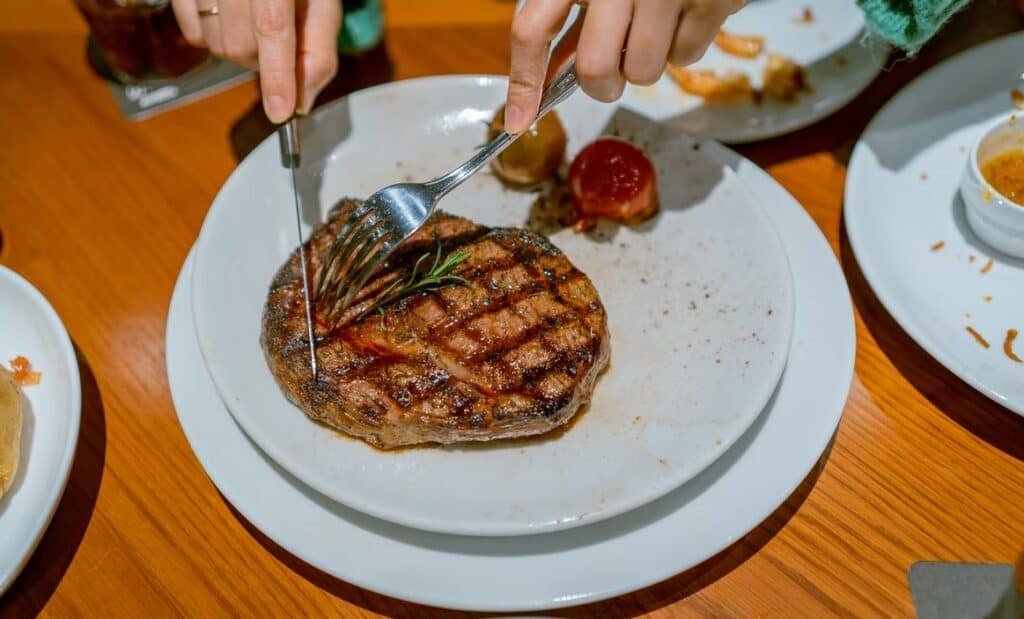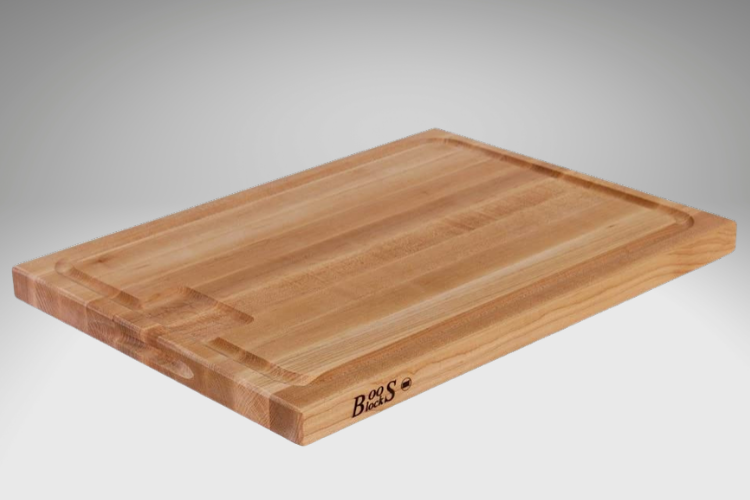How to use Japanese steak knives like a pro, hold the knife at a slight angle and use a sawing motion to make clean cuts through the meat. Using Japanese steak knives can take some getting used to, as they are typically sharper and thinner than traditional Western-style knives.
Avoid using a lot of pressure, as the knife’s sharpness should do most of the work. Be sure to also take good care of your Japanese steak knives by regularly sharpening and storing them properly. (also see What Is a Santoku Knife Used For – Important Addition to Any Knife Set)
If you want to invest in the best steak knives, keep reading! We’ll review what a steak knife is, what sets Japanese steak knives apart, How to Use Your Japanese Steak Knives Like a Pro and what Japanese knife I should buy.
Best Knife Brands Japanese Knife vs. Western Knife: What’s the Difference?








Western and Japanese steel steak knives are the two most common varieties when shopping for knives. But what makes them different? (Learn more about Gordon Ramsay Tested HexClad Japanese Knives – Damascus Steel Knives)
Western Knives
A Western or German knife is the most common knife type a cook will encounter. These knives are made with rough chopping and cutting, suited to Western ingredients like starchy vegetables and meat with bones. These knives are defined by having a slightly heavier weight and a thicker blade with a slight curve. Western knives will also be sharpened on both sides of the blade, forming a symmetrical bevel. (See What Knives Does Hell’s Kitchen Star Gordon Ramsay Use: Gordon Ramsay Knives)
Japanese Knives
With thinner blades, a Japanese knife set with steak knives tends to be much lighter than a Western knife. The most significant difference, though, is the lack of a curve in the blade. Japanese folding steak knife are straight along the bottom, meant to make precise cuts and delicate trimming needed for Japanese cuisine. Japanese knives will be sharpened for a single bevel blade on only one side.
How to Use a Japanese Steak Knife
Using a Japanese steak knife set is a unique experience that requires precision and skill. To use it like a pro, the first step is to ensure the knife is sharp and well-maintained. When slicing, it’s important to hold the knife correctly and to use a sawing motion to create clean cuts.
The knife should be cleaned and dried carefully after each use and stored safely. With practice and attention to technique, anyone can learn to use Japanese steak knife sets like a professional chef, creating perfectly sliced steaks and other meats with ease.
How to Safely Cut Using a Steak Knife
Hold it in your dominant hand when cutting meat with a steak knife. Grip the knife handle with your fingers, placing the index finger on the top of the knife, where the blade meets the handle.
Pierce the steak with your fork to hold it steady, then cut through the meat to make your cut. Holding it this way will give you greater control over the blade and let you put pressure to steady the knife as you cut. This way, you should be able to cut with ease! (Read more about What a Santoku Knife Used For – Important Addition to Any Knife Set)
Other Uses for Steak Knives
While most steak knives are designed for one use, these can accomplish many other kitchen tasks! Here’s how to get the most out of your Japanese steak knife:
- Fruits and Vegetables: A steak knife can be great for cutting up most small producers in a pinch. While we don’t recommend using this for something as large as a watermelon (a Santoku steak knives or chef knife works here), it’s excellent for smaller fruits and vegetables, like tomatoes, apples, berries, etc.
- Dairy: If you need to chop some cheese, a chef’s knife is an excellent tool. Use it to put things into cubes or slices.
- Meats: A steak knife wouldn’t be good for carving a whole chicken, but it is a good choice for minor work with meat. A steak knife is good for the job if you want to trim essential fat or portion things like fish.
Caring for Your Steak Knife
If you want your steak knife to last, taking care of it is essential. Over time Japanese Damascus steak knives can become brittle or damaged without proper care. To ensure your Japanese steak knife set lasts a lifetime, you must clean and store them properly.
- Properly Wash and Store: Dishwashers can be too harsh, putting your knives through a lot of movement, leading to chips and breaks. Dishwashers are also awful on a wood handle, which can become warped and damaged when submerged in water. It would help if you always handed wash your knives, whether a massive carving knife or a tiny steak knife.
- After handwashing your knife, you should immediately dry them. Then, store them in a cool, dry place. Both are good options for a magnetic strip knife rack or a wooden knife block. It will keep your knives nice and dry and away from dirt and debris in the kitchen.
- Regularly Sharpen: It would be best to sharpen a steak knife regularly to get the most out of it. It’s important to remember that a Japanese chef knife must be sharpened differently than a Western knife. (Check out Santoku vs. Chef Knife – What Are the Differences)
- Western knives get sharpened on both sides, which is what some knife sharpener tools are suited to. Use a tool like a sharpening rod or stone to ensure you only sharpen a single side of your knife. This will give you greater control over the sharpening.
What is a Steak Knife?
A steak knife is a table knife designed to efficiently and effectively cut steak and other thick cuts of meat. It often features a partially serrated blade and wood handle and can also be used for slicing tomatoes and bread or cutting sandwiches neatly in half.
In Conclusion
We hope the abovementioned tips will help you get the most out of your Japanese steak knives! These are beautiful tools for the kitchen, especially for meat lovers who want an easy, enjoyable eating experience.
Last Updated on December 16, 2023 by John Siracusa



